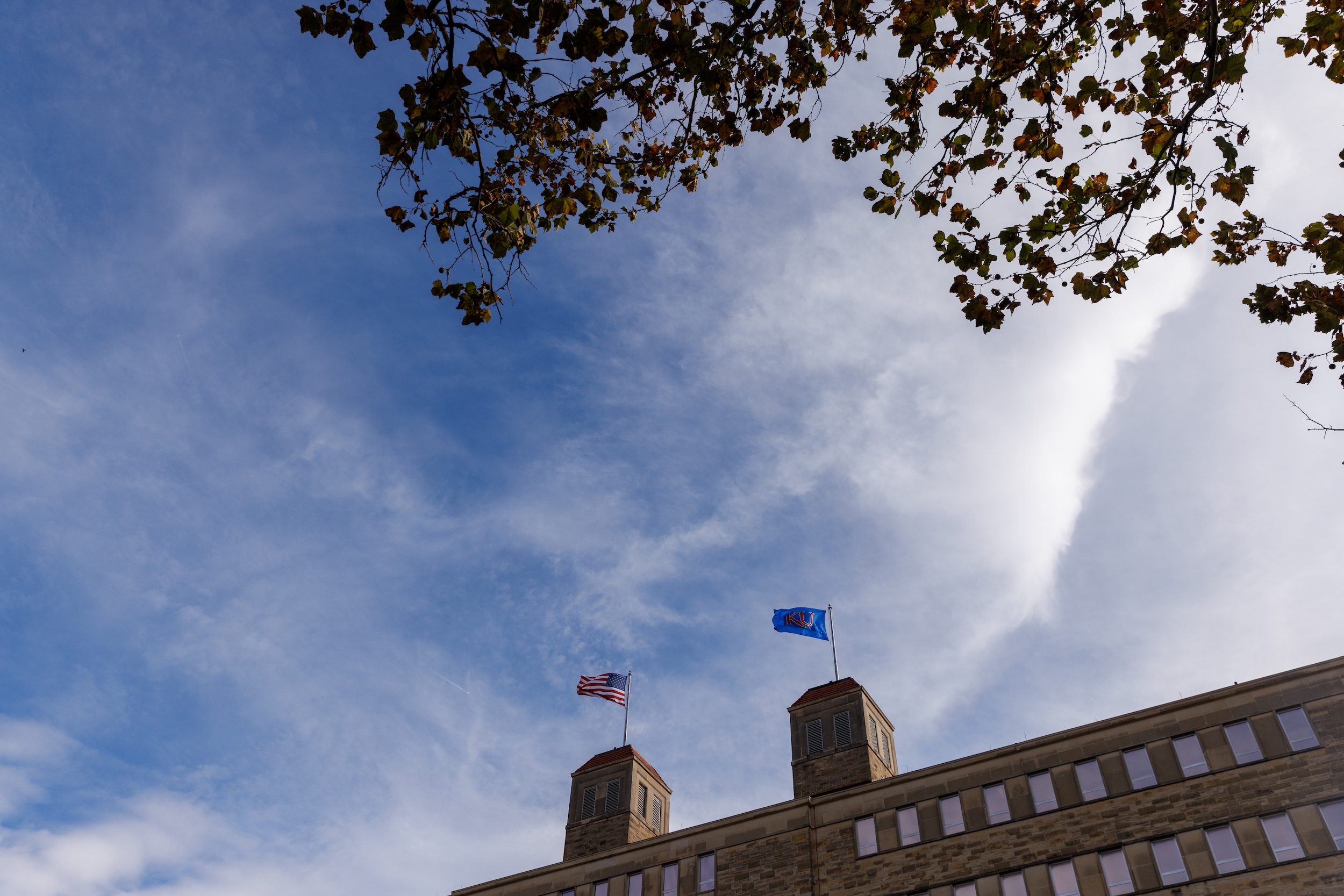
As Poppy DeltaDawn, assistant professor in the University of Kansas Department of Visual Art, sees it, the 72-page “RATIO: Digital Weaving to Change the World” (For the Birds Trapped in Airports/LMRM, 2024) is her first take on a more cross-disciplinary approach to the possibilities and implications of the Thread-Controller 2 digital hand-loom.
“It’s a hand-loom outfitted with computerized Jacquard technology that was invented in the 1990s by an Oslo weaving professor, Vibeke Vestby,” DeltaDawn said. “It’s made by the Norwegian company Tronrud.”
The maker says it “enables the weaver to expedite the process of converting ideas into actual form or woven fabrics.”
DeltaDawn is building upon that framework.
“I relocated to KU from the School of the Art Institute of Chicago to develop the Textile and Fiber area’s digital weaving program,” said DeltaDawn, who arrived on the Lawrence campus in fall 2023. “In the last decade, institutions across the world have been integrating handweaving and innovative design into their curriculum, yet there are still relatively few opportunities to learn the loom and consider its social and historical contexts.”
DeltaDawn spends much of “RATIO” explaining and illustrating her methods — practically and step by step — programming the TC2 loom using original designs created in the Adobe Photoshop computer program. But she also recounts the development of weaving technology in China and Europe, integrating a philosophy that, in the words of her publisher, “considers the broader implications of creating cloth and why it matters to our agency, autonomy and freedom.”
The book also contains a preface by the co-directors of Chicago’s LMRM (“Loom Room”), a community weaving center with one of the largest digital looms in the country. The book debuted during LMRM’s 2024 Weaving Workshop Weekend, a digital weaving conference in which DeltaDawn also presented a lecture and new work in a group exhibition with the event’s other presenters.
DeltaDawn said her hiring at KU is an encouraging sign of the times.
“There’s an interest in traditional textile production that was experiencing a divestment in the past 20 years or so,” she said.
In “RATIO,” DeltaDawn writes of connecting the renewed interest in hand-making cloth and other traditional crafts to the so-called “tradwife” movement, suggesting that “traditional” and “conservative” values are conflated. But there are plenty of other factors at play, she said.
In her classes and research, DeltaDawn lectures on why weaving matters and why it is essential to continue innovating this human technology. Among other exemplars, she points to Mahatma Gandhi’s Swadeshi movement that espoused a self-reliant community rooted in traditional cultural and economic subsistence.
“Because the bulk of our manufacturing takes place overseas, the average American just doesn’t know how textiles are made anymore,” DeltaDawn said. “Textiles used to be … a recognizable characteristic of our humanity and of our aptitude to manipulate the world around us into objects of cultural value and use value. The textiles that we use could tell a story about our communities and the land that we occupy.”
With more artists, designers and researchers interested in the creative possibilities of the digital loom, DeltaDawn said, a field manual that acknowledges the realities of our current material culture is needed.
“After being a part of digital weaving and textiles programs around the country,” the KU researcher said, “I realized that there was no playbook, no rules, no pedagogy for thinking through the ramifications of this novel technology. I realized that we have an opportunity to effect change and to consider what it means to make art today with ancient cultural practices.
“That is this book. This is the first step — asking, ‘What is the future of the field; the future of weaving?’ ‘RATIO: Digital Weaving to Change the World’ reveals and reminds its readers that weaving is a human-powered activity that was systematically taken from weavers.”
Ensuring classroom excellence with the presence of preeminent educators is one of the College of Liberal Arts & Sciences’ priorities in the current campus fundraising campaign with KU Endowment. For information on how you can help support the College, please contact Sheri Hamilton, College Development Team Lead, at KU Endowment (785-832-7454).
Stay Up to Date on the Campaign
While we strive for perfection, typos happen. Please report them.
1891 Constant Ave, Lawrence, KS 66047 | PO Box 928, Lawrence, KS 66044 | 785•832•7400 | 800•444•4201